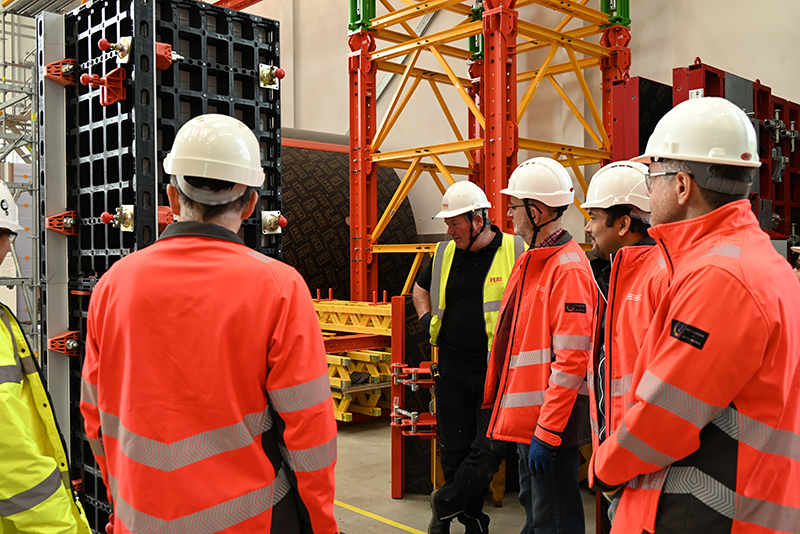
SCAFFOLDING and formwork specialist PERI recently held its first training workshop for temporary works engineers, site managers and designers at Laing O’Rourke.
The session took place at PERI’s training facility and exhibition hall in Brentwood, building on a series of similar events previously held for other sub-contractors in the industry.
The one-day workshop, delivered by PERI’s field services manager and experienced scaffolding instructors, covered a range of topics designed to improve the group’s understanding of equipment safety and proficiency when designing solutions and carrying out temporary works checks on site.
Key training activities included:
- Practical assembly of two PERI system scaffolds: a birdcage scaffold and a stair tower.
- Inspection of a tube and fitting structure
- SKYDECK installation, offering practical experience with decking systems.
- A walkaround, introducing participants to various products and their real-world applications.
- Guidance on how to reference drawings correctly, identify potential issues, and what to look for in system components.
The workshop was attended by engineers and temporary works designers at various stages in their career. PERI added that the training was particularly valuable for those involved in checking temporary works systems on-site prior to concrete pours, ensuring any potential damages or deviations from the drawings could be identified and corrected.
Anu Adeyemi, graduate engineer at Laing O’Rourke, said, “My role involves carrying out temporary works checks, so workshops like this help to simplify the terms and system components you come across on site. Everything is broken down so it’s easier to understand.”
Terry Hall, field services manager at PERI UK, added, “It’s critical for people to see and handle the actual materials and equipment they will come across on projects. A lot of people may not have this practical knowledge, yet they are tasked with reviewing drawings. For many, this is the first practical training programme that has helped to bridge that gap.
“By seeing the issues on-site, such as deviations from drawings or improper practices, attendees gain a better understanding of how to refer back to the drawings for best practices. This is key to maintaining safety and quality.”








